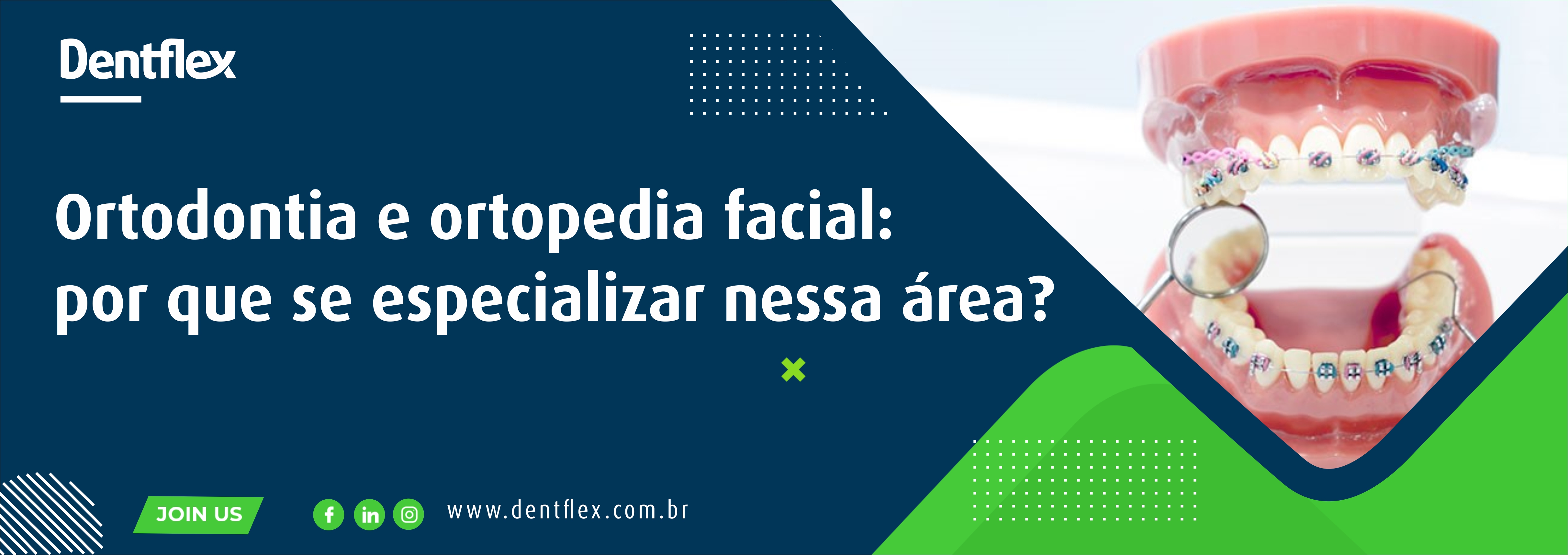Orthodontics and facial orthopedics: why specialize in this area?

Dentistry is a profession that encompasses several different specialties, each of which is responsible for an important part of the oral health of patients. Among them are Orthodontics and Facial Orthopedics, which are very important specialties to deal with problems related to the positioning of teeth and bones.
Specialization in these areas is essential for professionals to know how to deal with this type of problem, becoming qualified to solve them. Therefore, investing in this area is a way to qualify for a specific role within the profession.
In this article, we will show what Orthodontics and Facial Orthopedics are, what are the attributions of the professional in this area and how the job market is. In addition, we'll show you what you can learn from this specialization. Follow the reading!
What is Orthodontics and Facial Orthopedics?
Orthodontics and Facial Orthopedics are specialties of Dentistry whose objective is the study, diagnosis and treatment of alterations in dental development and in the growth and development of the face. In addition, they implement facial and smile esthetics and masticatory function.
Orthodontics is responsible for corrections based on tooth movement. Thus, it is more indicated in cases where the bones are positioned correctly and the problems are in the dental positioning, which can occur at any age. The use of fixed appliances is essential, providing patients with greater comfort and faster treatment.
Facial Orthopedics, on the other hand, is indicated for younger patients, before or during the period of growth, with the aim of stimulating or redirecting the growth of the face. Therefore, its main goal is to reestablish a healthy relationship between facial bones and teeth.
What does the professional specialize in these areas?
The orthodontist seeks harmony between all teeth, considering aesthetic aspects, their shape, and functional aspects, such as chewing. Therefore, orthodontic treatment not only helps with the dental position, but also restores the correct function of chewing, swallowing and speaking, in addition to reducing any dysfunction in the temporomandibular joint.
The most popular procedures are usually related to tooth alignment and open bite. This high demand is due to the fact that they are easily detected, enabling more people to seek treatment.
For the work of orthodontics to be completely efficient, it is necessary that the bones and teeth are in harmony. It is at this point that the work of Facial Orthopedics comes into play.
With Facial Orthopedics, the orthodontist is able to stimulate or contain, to a certain extent, the growth and positioning of the bones of the face. It is possible to control, for example, a jaw that is overdeveloping or, in the absence of development, use devices that make it grow properly. The jaw can also be treated.
Orthopedic appliances are different from those used in orthodontics. They are removable internals, which are inside the mouth, so they don't act on the teeth, only on the bones.
How is the job market?
This is an area that is growing, as the advancement of technology has allowed more precision in diagnosis and increased the speed of treatment. In this way, it is possible to reach more patients who need these interventions.
Another point that explains the heating of the labor market is the greater general awareness about oral health. The knowledge acquired by a large part of the population contributes to many people seeking to solve problems related to teeth, dental arch, chewing, increasing the demand for professionals working in this specialty.
It is important to emphasize that the work of Orthodontics and Facial Orthopedics goes far beyond aesthetic benefits. These specialties interfere with the entire functionality of the mouth, such as chewing and speaking, promoting better health in general.
In addition, prejudice against the use of braces has greatly decreased among adults. In the past, this was a more common feature among younger audiences, which is currently not reflected. People of all ages understand the importance of orthodontic treatment and are not opposed to the use of braces on their teeth.
What can you learn in an Orthodontics and Facial Orthopedics specialization?
Specialization in this area is very complete and brings together both theoretical and practical knowledge. Therefore, when choosing an institution for studies, it is important that professionals evaluate the laboratories, as they are essential for classes and provide excellent learning.
Thus, the course is divided into theoretical classes, laboratory practices and clinical care. The objective is to make the professional able to diagnose, plan and carry out preventive, interceptor and corrective orthodontic treatment.
The curriculum includes diversified subjects, with orthodontic and orthopedic theories being among the most important subjects. In addition, the discipline of diagnosis, treatment and planning also takes place in several modules.
The specialization course is designed for those who are already graduated in the area. There are many institutions that offer a specialty in Orthodontics, but it is always important to know the workload, the titles of the professors and the experience of the faculty in the job market.
Admission to specialization takes place in different ways, depending on the institution. Some require a selection test, which can be practical or curriculum assessment. Others only request the payment of the registration, in addition to the necessary documentation.
In this article, we learn more about Orthodontics and Facial Orthopedics, which are specialties in Dentistry that aim to maintain healthy teeth and bones. When looking for a specialization in this area, it is essential to find a quality institution, with a good reputation and that guarantees the necessary conditions for the study.
Source: Faculdade Arnaldo. Available at: https://www.faculdadearnaldo.com.br/blog/ortodontia-e-ortopedia-facial. Access on: 09/15/2021.
